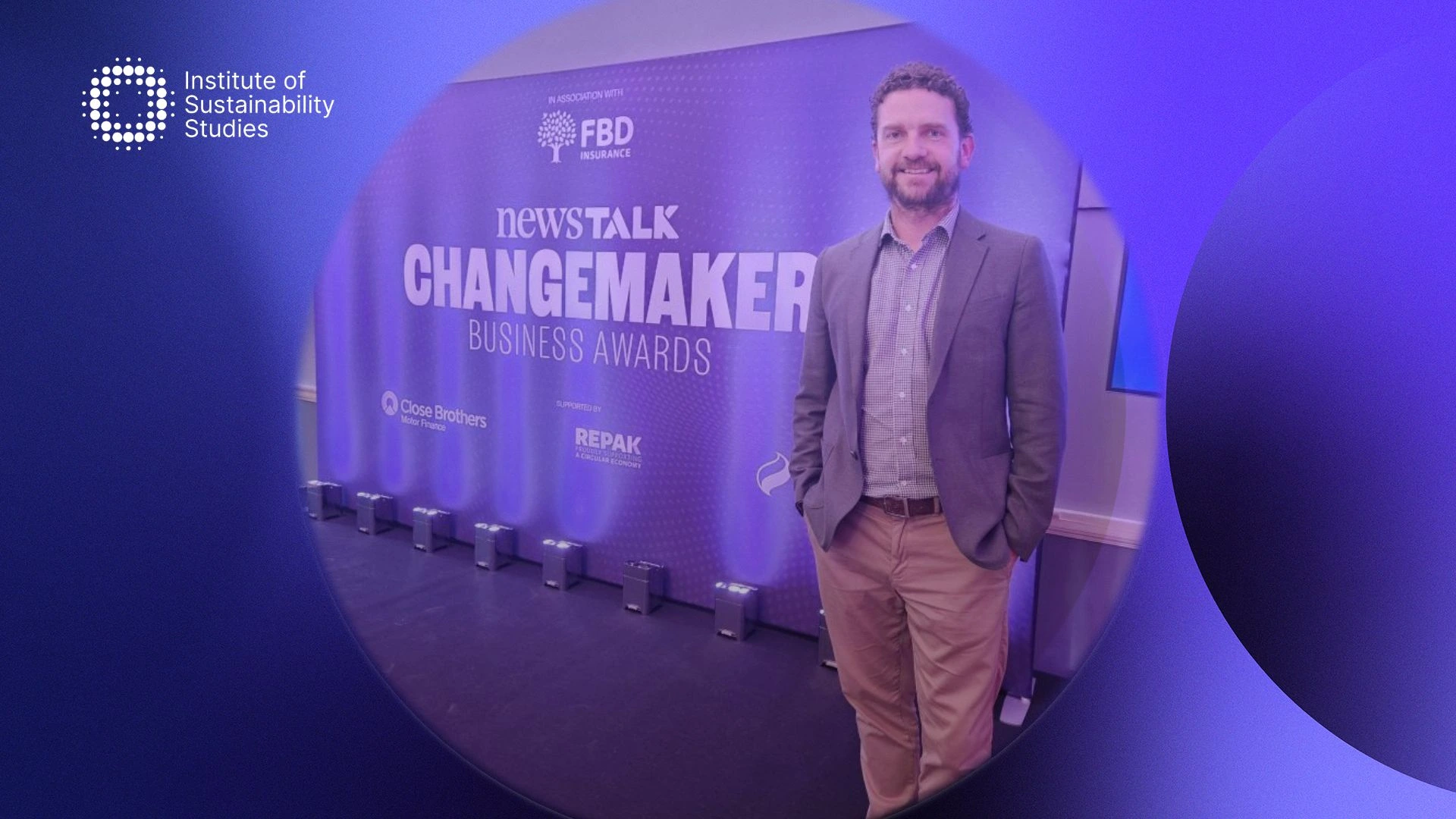One of the most important things we can do to fight the climate crisis is to talk about it. However, green communication has proven difficult for brands and organisations. There is a lot of misinformation out there and great levels of mistrust, which make it difficult to communicate sustainability successfully.
According to Capgemini, 79 percent of customers are transforming their purchase preferences based on products’ environmental or social impact. Therefore, there is huge potential to capitalise on sustainability or green marketing.
These are some of the barriers which have prevented companies from rising to the comms challenge. However, communication is absolutely essential to driving and inspiring action from consumers, other businesses, and governments. To communicate sustainability effectively, organisations must first integrate it into their corporate sustainability strategy.
Below we will dive into some of the challenges brands face when it comes to green communication and how they can overcome them.
An overview of green communication
Green communication is a strategy that combines expressing sustainability in a way that inspires meaning and comprehension and is good for both the environment and the company. As a practice, green marketing communication revolves around establishing good relationships between organisations with their partners, the environment, and society.
Successful green communication improves a company’s reputation, and trust, and has a positive impact on the business and its ecosystem. Based on good practices, sustainable communication can be the heartbeat of value in enterprises that prioritise the protection and health of their environment. For this reason, it is essential brands look at how they can go about unlocking the potential of green communication.
The importance of green communication
The way a brand communicates its sustainability efforts is one of the most important elements of green marketing. Lack of transparency and clarity can be incredibly damaging for businesses. Greenwashing is also on the rise, and brands have been named and shamed for engaging in it.
Consumers have come down on these brands for using misleading language and terminology like plant-based, non-toxic, and eco-conscious. They used these terms without backing them up with the actions they have taken. The practice of greenwashing is also becoming more and more subtle.
Therefore, brands need to communicate the truth in an easy way to create honest relationships with their customers. Using green-washed, manipulative language to attract environmentally conscious audiences may work initially but it will not be long before they lose trust and interest in the brand.
One example of a brand nailing green communication is the French footwear and accessories brand, Veja. They have a transparency section on their website, where they detail the full process of making each of their products. Percentage breakdowns of the materials used by each trainer are also included here.
When browsing this page, customers can also download biobased and biogenic carbon lab reports. These reports talk about Veja’s product materials which further prove their sustainability credentials. This may sound complicated, but the copy they use couldn’t be more accessible and fuss-free, taking customers on a journey into how they make their products.
The challenges companies face with communications
Green communication will allow your brand to be transparent and connect with customers. However, there are challenges companies will face which is often why they refrain from engaging in green communication. Firstly, there is a lot of mistrust out there because most people who are speaking about sustainability are doing it because they have to.
Consumers are increasingly sceptical of brands acting on sustainability and the purpose behind their actions. If brands fail to explain the validity of the purpose behind taking climate action, they risk losing customers. Another barrier for businesses that want to engage in green communication is the immense amount of misinformation out there currently.
Sustainability is a buzzword that has hit just about everywhere. Society is constantly being bombarded with information about sustainability. This high amount of misinformation can either consciously mislead or unconsciously confuse. Green communication always calls for a change too, whether this is concerning action or thinking.
This may not seem like much of a challenge, but it is very difficult to shift people’s mentality when there is no sign of an immediate benefit to them. Green communication should be honest and truthful and stem from science. Sustainability is not simply an opinion, it is something we have to work to achieve to save the planet.
Due to the need to back up sustainability with facts, brands run the risk of their communication being confusing, boring, or unengaging. Businesses are increasingly prioritising sustainability and trying to act more responsibly. However, it is impossible for brands to tackle every environmental challenge in their strategy.
In saying that, not all consumers realise the enormity of this challenge. Therefore, some businesses refrain from engaging in green communication for fear they will receive backlash from consumers that they are not doing enough. In addition, businesses that take too long to act in the eyes of customers worry they will receive backlash for this too.
How to successfully communicate sustainability
It’s understandable why many brands are hesitant to engage in green communication. Communication alone can be difficult, never mind when you add sustainability into the mix. Brands are unsure of how to approach it or are concerned they will not do it successfully. However, they must overcome these challenges and talk about what they are doing to have a positive impact. This will not only help them grow their business but it will raise awareness and inspire action on the bigger picture.
How do you communicate sustainability? The most important thing is to be transparent. Unfortunately, the world is in the right state. Rather than focusing on the negatives, people need to become educated. They can learn and become inspired by finding out more about how companies are improving their environmental impact. Being transparent means drawing the blind and inviting your audience in to get a sense of where you are at on your sustainability.
Showing you are not quite there yet but taking action shows them you are human, committed, and driven. Secondly, it is important to acknowledge that communicating sustainability involves education for both you and your audience. However, it must still be engaging for your customers. They need to feel empowered by the positive changes you are making and go away believing they can also have a positive impact. The big aim here is to engage people rather than frighten them or cause eco-anxiety.
Due to the educational aspect of communicating sustainability, you must make it accessible. You should utilise units of measurement that people can easily relate to and connect with their day-to-day life. Be sure to not just throw words around but instead, make people understand why you are doing this and what exactly you are doing.
Green communication also needs to be based on data and facts. Be sure to know your facts and data before you try to communicate sustainability and how your business is making a difference. Another thing to keep in mind is just how important it is to not cause fear but inspire action. With this, you need to communicate sustainability in a positive manner rather than a negative one.
Your communications should empower by illustrating what can be done to tackle environmental problems rather than what should not be done or has not been done. With sustainability being such a buzzword, it is vital to take a different and unique approach. With the amount of content out there, it can be hard to stand out, so you need to acquire active engagement from your target audience.
This means your communication should be powerful enough to not only remain in the minds of consumers but to inspire, influence, and act. Consider how your communications can impact your audience – how your writings will make them feel and what they will do next. Try to also use words other than ‘sustainable’ or ‘sustainability’. Using other terms will show you know what you are talking about and lead to better explanations for your audience.
Summary
The bottom line is green communications are powerful and can be utilised as a mechanism to inform and engage consumers. The information offers empowerment, and successfully communicating can hit the right nerve and result in change and energy in lots of different directions. Green communication paves the way for business growth but also drives awareness of environmental issues and encourages action amongst consumers and instills in them the belief that they can have a positive impact. For these reasons, we need more companies to overcome the comms challenge.
While green communication may seem daunting, all businesses need to communicate what they are doing to make a difference. The tips above will help any organisation better approach communicating sustainability whilst ensuring their audience is engaged and that they are not engaging in any unethical or misleading practices.










